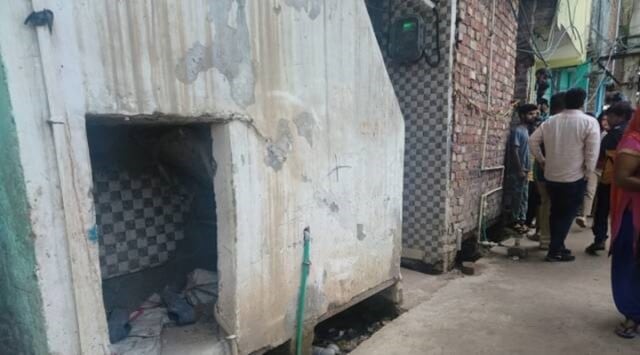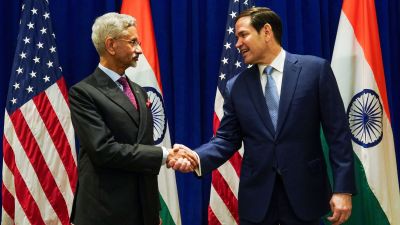📣 For more lifestyle news, click here to join our WhatsApp Channel and also follow us on Instagram
Shahbad Dairy murder: Decoding the ‘bystander effect’, a phenomenon experts say led to witnesses not informing police for nearly 30 minutes
Awareness of bystander effect and knowledge of alternative options can help individuals take ownership and responsibility in such situations. When one person takes initiative, others might follow, said Dr Kamna Chhibber, Head of Mental Health, Fortis Healthcare
 The spot of the incident in Outer Delhi’s Shahbad Dairy, where the teenager was stabbed to death on Sunday night. (Express Photo)
The spot of the incident in Outer Delhi’s Shahbad Dairy, where the teenager was stabbed to death on Sunday night. (Express Photo)Recently, a 16-year-old girl was stabbed at least 20 times and then bludgeoned to death by Sahil Khan, her 20-year-old-boyfriend, in Outer Delhi’s Shahbad Dairy area. Almost as shocking as the brutal killing of the minor is the fact that despite several pedestrians and bystanders present at the site of the murder, none intervened, tried to help, or even called the police.
According to the Delhi Police, the witnesses purportedly did not make a PCR call for around 25 to 30 minutes even as the teenager’s body was at the spot. DCP (Outer North) Ravi Kumar Singh said that at around 9.35 pm, a police informer informed the beat staff regarding the murder.
While one would expect people to react and offer help in such situations, experts point out that it may not necessarily be so – a phenomenon they describe as the ‘bystander effect’, which was first demonstrated by psychologists John Darley and Bibb Latané in 1968, after the infamous murder of Kitty Genovese in 1964 in Queens, New York. Genovese, 28, was stabbed, raped, and killed by a serial killer near her apartment building, and despite 38 people hearing her cries and witnessing assault that went on for nearly half an hour, according to numerous reports, no one had stepped up to help.
The American Psychology Association (APA) describes the bystander effect as a “a phenomenon in which people fail to offer needed help in emergencies, especially when other people are present in the same setting.” The effect is closely linked to the psychological tendency for the diffusion of responsibility in group settings, research in social psychology has evinced.
But why does this happen?
According to Dr Shruti Sharma, a consultant psychiatrist, “When somebody is alone in such a situation, they assume responsibility. They think ‘It’s either me or nobody.’ But when others are around, each person expects the other to do something. And when a person sees that others are not doing anything, each person might feel why should I be the one to do something?”
Adding, Dr Kamna Chhibber, Head of Mental Health, Fortis Healthcare, told indianexpress.com that “Sometimes when people are put in a situation where they witness aggression or violence, they are unable to determine what they can do in that scenario. They may feel unequipped to respond.”
But, experts point out that there are a few other factors that may contribute to bystander apathy. Based on their experiments, Latané and Darley identified that evaluation apprehension – fear of being judged by others around, and pluralistic ignorance – the tendency to rely on the overt reactions of others to inform one’s own – are important components of the bystander effect.
Dr Sonal Anand, Consultant Psychiatrist, Wockhardt Hospitals, Mumbai, further elucidated, “Social psychologists hold that we make these decisions based on the social situation, not our own personality variables. Relying on others to assess the situation and then erroneously concluding that no action is necessary when help is actually needed is called pluralistic ignorance. Sometimes, bystanders do not understand the situation or how grave the situation is depending on the reaction of other bystanders.”
This is connected to the psychological concept of imitation, she noted. Social imitation, first studied by Albert Bandura in the 60s, is described as how in social settings, we often take cues from others to understand what the appropriate behaviour in a given situation is, and then produce the same. Further, helping someone may be easier in some situations than in others. According to a study on bystander behaviour by Piliavin et al., onlookers tend to evaluate the costs and rewards of helping and not helping before choosing whether to respond to a crisis. To put it simply, it may seem easier to assist someone who collapses due to a medical emergency, but one may avoid confronting a knife-wielding attacker after assessing that there is a risk of personal harm.
How can such inaction be prevented?
“Individuals may be desensitised to violence or aggression. Every instance of aggression that is ignored becomes a reinforcer of more such incidents. Which is why it is important to pay attention to such incidents, such as bullying, from a young age, and impart the knowledge and skills required to tackle them appropriately,” recommended Dr Chhibber.
“Awareness of bystander effect and knowledge of alternative options can help individuals take ownership and responsibility in such situations. When one person takes initiative, others might follow,” she added.
Concurring, Dr Anand said that it is important to acknowledge the existence of the effect and single out one person to lead the situation. “Having knowledge about the bystander effect and having social outreach programs can help,” she continued.
The public system should also motivate citizens to help those in need and report crimes, Dr Sharma said, further stressing that the legal system needs to be simplified so that more witnesses are willing to get involved. “Often, bystanders may not take action as they feel that then the police might involve them in the proceedings of the case and they don’t want to go through the hassle. The system should encourage people to take responsibility and call for help.”
From the flip perspective, experts also advise that the person in distress should make personal contact with bystanders to increase the chances of aid.
“If you make personal contact, or personally appeal by shouting out to a particular person for help, then that person feels responsible. Then, they are no longer a mere bystander. They are compelled to become involved due to a guilty conscience,” noted Dr Sharma.
📣 For more lifestyle news, follow us on Instagram | Twitter | Facebook and don’t miss out on the latest updates!
📣 For more lifestyle news, click here to join our WhatsApp Channel and also follow us on Instagram
Photos


- 01
- 02
- 03
- 04
- 05
























